1410, PARKSON, 44-60 ZHONGSHAN ROAD, QINGDAO, CHINA
What are the different grades of chain?
A chain is a serial assembly of connected pieces, called links, typically made of metal, with an overall character similar to that of a rope in that it is flexible and curved in compression but linear, rigid, and load-bearing in tension. A chain may consist of two or more links.
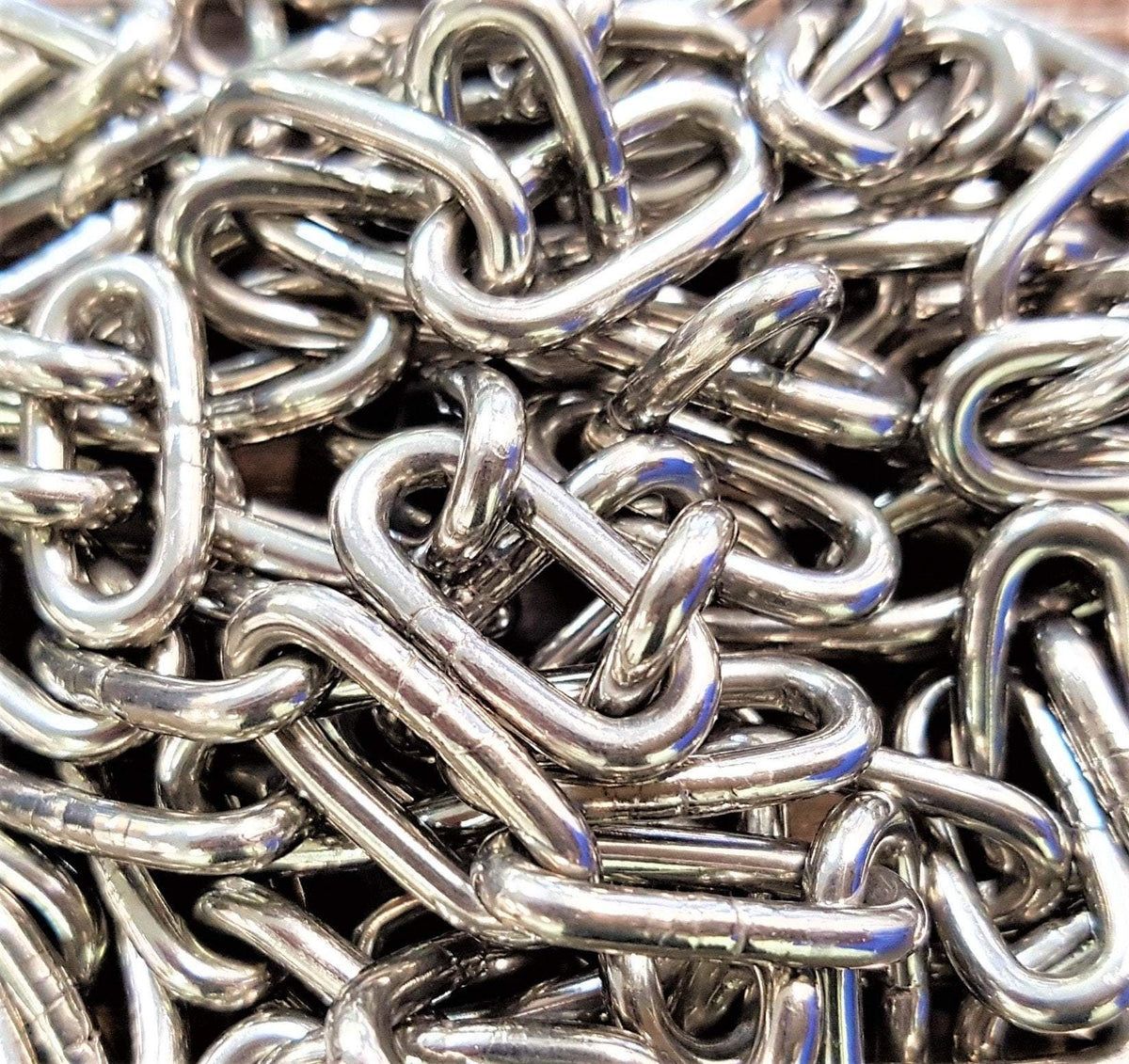
Grade Types and Uses
What is the Difference Between Grades of Chain?
Welded chain comes in various different strengths, referred to as “grades” on the market. The grade, indicated by a number, represents the strength—or mean stress value—of the chain. As the chain grade number increases:
The material of the chain is typically harder and more resistant to abrasion
Strength-to-weight ratio increases
Working Load Limit (WLL) increases
The number that indicates the grade of the chain is a representation of the solution to a mathematical equation. This equation takes the tensile force of the chain —measured in Newtons—and divides it into the cross-sectional area of the link size on that chain in millimeters.
The simplified equation is as below:
Newtons / millimeters2
From this equation, you get the number that corresponds to the grade of the chain. The higher the grade number, the higher the tensile force is in comparison to the size of the chain links—resulting in a higher strength-to-weight ratio.
The biggest difference between grades of chain is that carbon steel chain—Grade 30, 43, and 70—is not recommended for overhead lifting, while alloy steel chain—Grade 80, 100, and 120—is recommended for use in sling assemblies and overhead lifting applications.
Grade 30

As shown in the chain strength chart above, chain grade 30 has the smallest amount of strength on the market. That said, their low-stress limit actually makes them ideal for general-purpose, economical uses. Perfect for light construction, agriculture, or marine and household applications like swing sets or guard railers. Grade 30 chains are composed of malleable, rust-resistant carbon steel and have a working load limit between 1,300 to 6,900 lbs depending on the size of the link. While they may not be as strong as alloy chains, G30 chains are the least expensive option for your light construction or agricultural job.
Grade 43
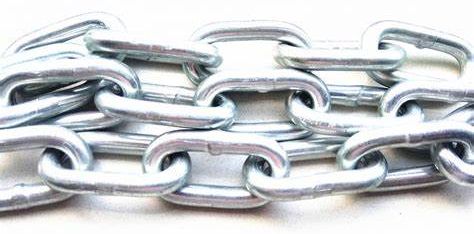
Chain Grade 43 are more durable and stronger than chain grade 30 ratings, making them perfect for more demanding jobs like logging, farming, towing, or as a general-purpose utility chain in trucking. Though stronger than G30, these tow chain ratings are still not recommended for overhead lifting jobs and have a working load limit of 2,600 to 13,000 lbs.
Grade 70
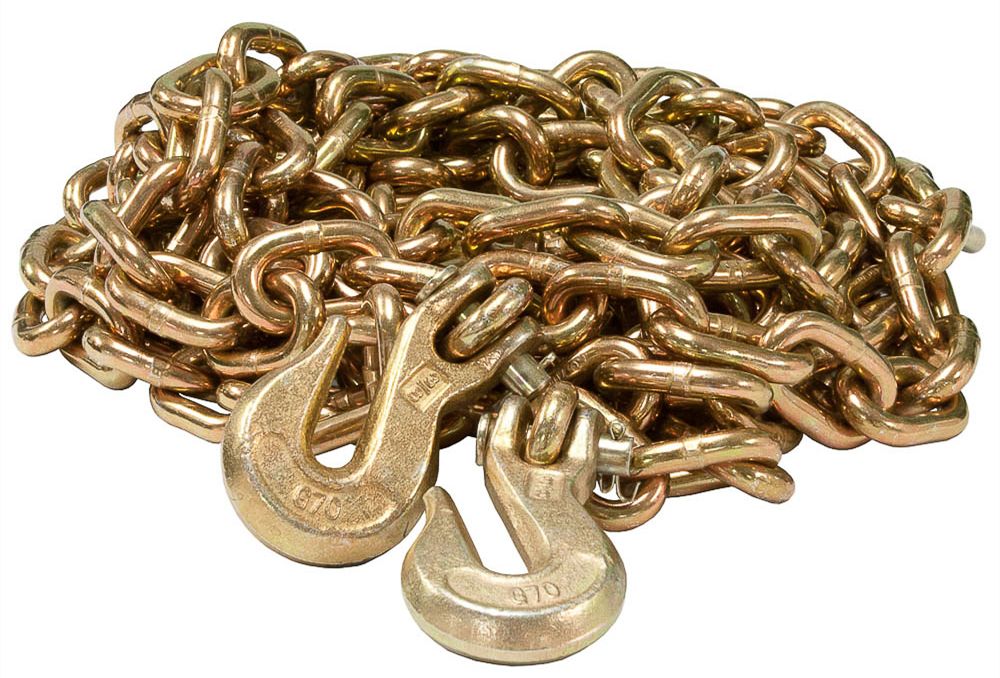
Chain Grade 70 may be the most common tow chain rating you will find in the flatbed hauling industry. Usually coated in a yellow chrome finish, the G70 chain has a load rating roughly 20% higher than Grade 43 making it the strongest carbon steel chain available! Perfect for tying down heavy loads and for tough towing jobs, their unique gold coating makes them DOT recognizable and provides protection from abrasion which then increases their on-the-road lifespan.
Chain Grade 70 has a working load limit between 3,150 to 15,800 lbs. They’re typically used by truckers and loggers for load securement and towing jobs, and have thus earned the nicknames of Transport and Trucker chain!
Grade 80
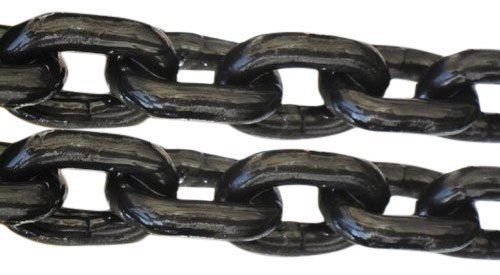
The first chain on our chain number chart to be made of alloy steel chain, Grade 80 chain is the first suitable chain to be used as a sling for overhead lifting and heavy-duty towing. The unique alloy material makes this chain’s strength incredibly high, carrying a working load limit of 3,500 to 18,100 lbs! Additionally, you will often hear this chain be referred to as the Alloy Chain, and it’s recognizable by the sleek, black coat finish.
Grade 100

About 25% stronger than the chain rating 80, the chain Grade 100 is the strongest chain on most chain suppliers’ markets. G100 is made of similar strong, alloy steel and can be used in a variety of jobs and industries including overhead lifting slings, construction, manufacturing, and rigging! Based on the size of the links, G100 chains have working load limits of 4,300 to 22,600 lbs. It’s the absolute best choice for extremely heavy-duty lifting or towing jobs.
Grade 120
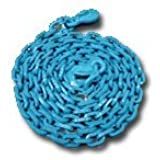
Still pretty new to the trucking scene, chain grade 120 is the strongest possible chain you can buy. 50% stronger than Grade 80 and 20% strong than Grade 100, G120 chains are the most distinguishable chain because of its unique design and style – it has a bright, blue-coat finish and rectangular links! Grade 120 chains have a working load limit of 5,200 to 27,500 lbs, and are built to fit the most rigorous job requirements.
Safety Standards for Chains
Regardless of the material a chain is made of or the strength it is determined to handle, all chain ratings must adhere to the NACAM (National Association of Chain manufacturers) safety standards:
Chain lifted loads should never be transported or suspended over people.
All chains should be periodically inspected for cracks, wear, disfigurement, nicks, or overall damage.
Excessive temperatures or chemical exposure can reduce a chain’s performance; avoid these scenarios or frequently check and replace chains when necessary.
If thickness at any location of a link is less than the listed minimum value, all chains should be removed from service.
When mixing chain or component types, all should be rated at the working load limit of the lowest-rated component or chain.
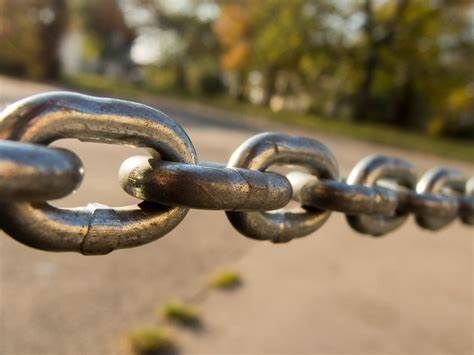
There are a few very common misunderstandings that people make when trying to find and purchase a chain grade for their load tie-down. Knowing these common mistakes will help ensure that you can avoid making them! there are two very common problems in the industry:
Using a hoist load chain for lifting.
Misusing or abusing alloy chains.
Use of Grade 70 chain for overhead lifting
1 Using Hoist Load Chain for Lifting Applications
Load chain—the chain used inside a hoist—is constructed very differently from the alloy chain used in slings for overhead lifting. One common problem is riggers in a facility using the hoist chain to wrap around / connect directly to loads for overhead lifting. There are several reasons that this is not compliant:
Load chain is designed specifically for use within the inner workings of a hoist. It is NOT graded for directly connecting to and lifting a load as a sling would.
Load chain does not meet the same elongation or hardness requirements as a Grade 80 or Grade 100 chain does.
If the lift causes any deformation in the load chain, when it is retracted back into the hoist, it could cause damage to and destroy the hoist.
Load chain is designed specifically for the hoist that it is installed in. It is not graded for the stress and rigor of overhead lifting that alloy chain slings are recommended for.
2 General Misuse and Abuse of Alloy Chain
The second most common problem when it comes to chain, is general misuse and abuse of chain slings. General misuse and abuse of alloy chain slings refers to, but is not limited to:
Improper storage of equipment, such as leaving slings laying around the shop floor.
Failing to get frequent enough inspection of your slings (based upon the severity of the application).
Frequent overloading or improper usage of slings.
Ensuring proper maintenance and storage of your lifting slings is extremely important for both safety of personnel and preserving the life of your equipment. When you don’t properly protect and maintain your lifting slings, you increase the chances of a dropped load, damaged property, injury, or worse.
3 Grade 70 Chain Used for Overhead Lifting
Another common mistake is the use of Grade 70 chain assemblies used in place of a comparable Grade 80 or Grade 100 single-leg chain sling.
As we talked about above, Grade 70 chain is not recommended for use in overhead lifting applications. The WLL, strength-to-weight ratio, and elongation factors simply do not meet the same expectations required by Grade 80 and Grade 100 chain.
Find more information about steel chain:
https://www.huahanmachinery.com/product/steel-link-chain.html